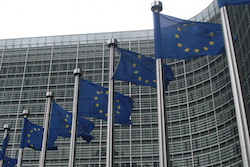The European Commission is seeking views on the future of 700MHz spectrum about whether it should be exclusively used by the mobile industry or shared with terrestrial broadcasters.
Industry players have until April to share their thoughts on a range of proposals first outlined by former EC commissioner Pascal Lamy in September.
The first, dubbed 2020-2030-2025, would benefit the mobile industry, by clearing the 700MHz band by 2020 for its exclusive use. In return, broadcasters would be guaranteed “regulatory security and stability” until 2030, with a review held in 2025 to discuss how the market has developed.
The second, the “flexibility option”, proposes wireless broadband to be used in a downlink-only capacity within the 470-694MHz band. Broadcasters would have first choice over the spectrum, with downlink services available to operators if television is not broadcast using it.
While 700MHz is currently used by broadcasters, some countries have begun freeing up the spectrum for mobile use. In November last year, Ofcom in the UK announced plans to free up the band, making it available by 2022 at the latest.
Operators including Vodafone New Zealand and Fareastone in Singapore have already launched LTE on 700MHz.
Later this year the International Telecommunications Union will thrash out the future of the band at the World Radiocommunication Conference. The European Commission said its own consultation, and those of member states, would help deliver a coherent position for the event.
An EC statement said: “Breaking down national silos and developing common approach to managing radio-spectrum use across the EU is a political priority for the new Commission. A forward-looking approach to spectrum and an ambitious reform of EU telecoms rules will be part of the Commission’s forthcoming plans for a connected digital single market.”
Read more:
Incoming ITU chief gears up for WRC 2015, warns pressure is on to reach consensus



